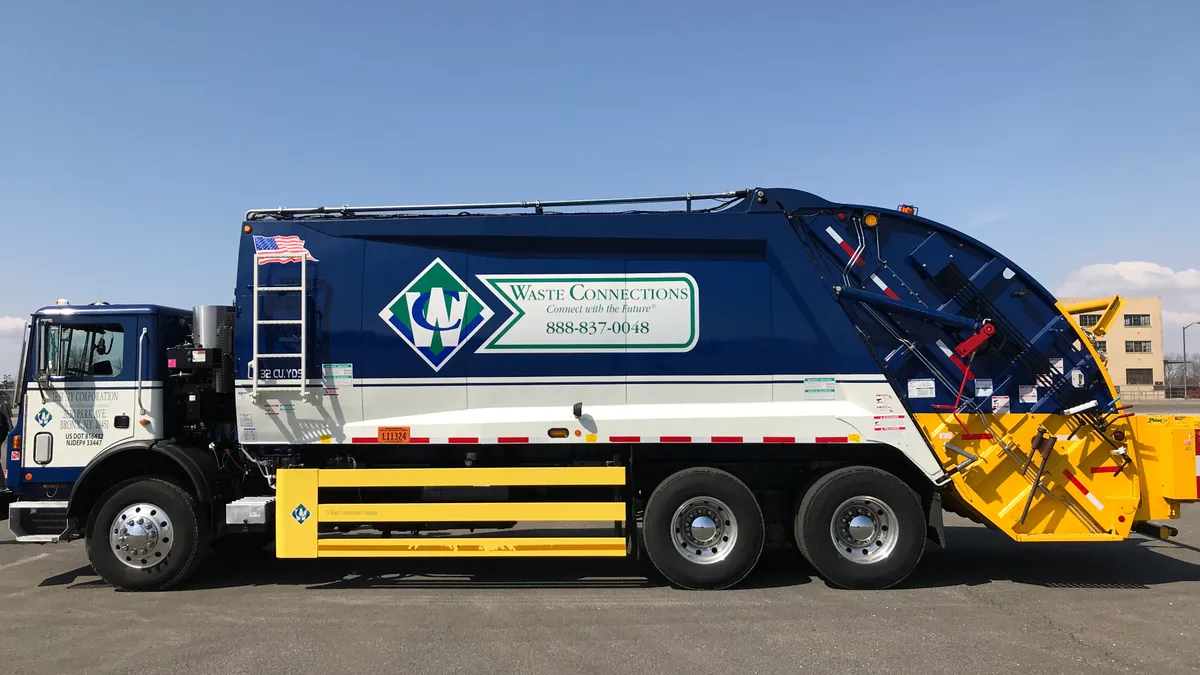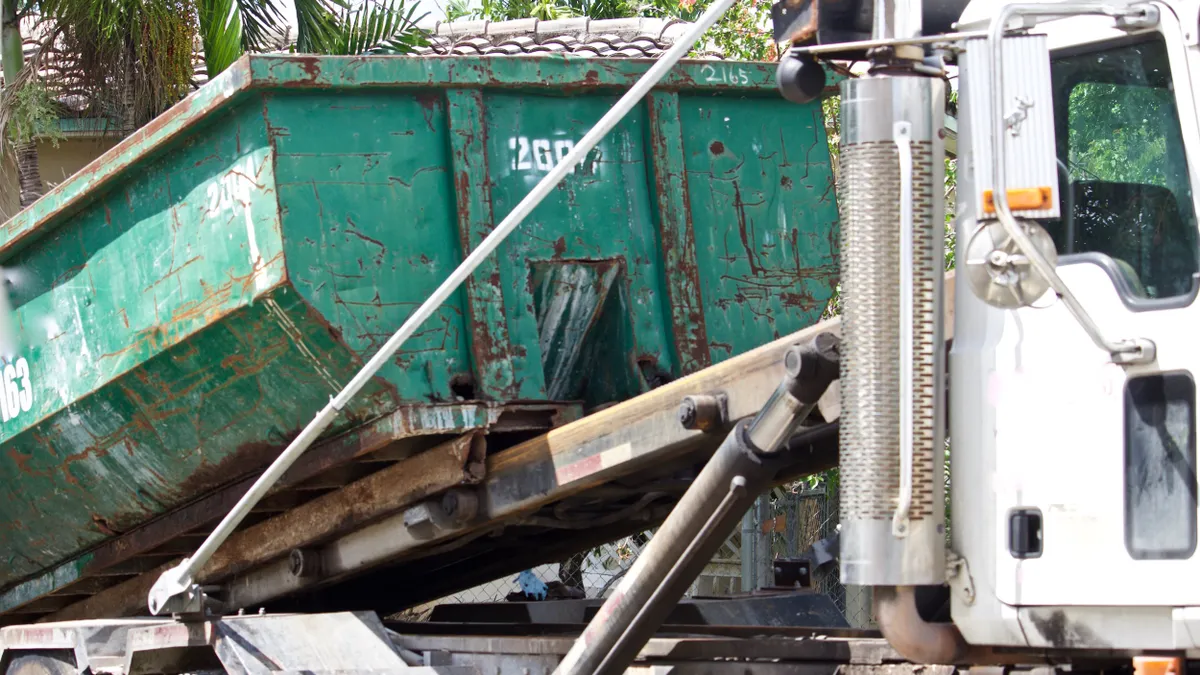Q2 Earnings
| Revenue | $1.306B |
| Year-Over-Year Change | 4.67%▼ |
| Net Loss | $227.1M |
Waste Connections reported second quarter results skewed by ongoing E&P headwinds, but saw revenue come in $18 million better than projected as economic activity slowly recovers. Unlike many of its peers, the company also released detailed new guidance based on a conservative outlook that economic recovery may have leveled off near term.
"We acknowledge that the impacts from COVID-19 persist and recognize that reopenings might be complicated by continued outbreaks and the imposition of additional closure requirements," said CEO Worthing Jackman in prepared remarks during the company's Friday earnings call. "As such, the trajectory of any recovery is inherently unpredictable and the ultimate impact to our business will not be known until we emerge from this period.”
Pandemic effects
- Waste Connections saw 53% of its commercial solid waste customers that suspended or reduced service follow up to resume service or increase their frequency through Q2, as compared to 12% in May. That number rose to 60% in July, influencing 50% of affected revenues.
- The company's commercial collection revenue was down 7.6% – with about half of that driven by the Northeast and Canada – and roll-off revenues were down 13%. Landfill tons were down 8% for MSW, 12% for special waste and 18% for C&D.
- Approximately $20 million in costs related to COVID-19, including temporary supplemental wages and a $5.5 million increase in bad debt provisions, were more than offset by savings from a range of other operating expenses. Jackman hinted at other types of supplemental employee spending planned for future quarters.
While Waste Connections continued to see improvements in July, Jackman said "our assumption really is that the recovery has plateaued." As noted by others during Q2 reports, this appears more tied to the duration and severity of economic shutdowns rather than the current intensity of coronavirus outbreaks.
For example, according to CFO Mary Anne Whitney, Houston has seen 65-70% of lost business come back while New York City has only seen about 30% come back. Other parts of the Northeast and Canada are similarly below the company's 60% average. Amid this environment, Whitney said the company was being "sensitive" to the timing of planned increases, but "there’s no change in the way we think about pricing."
Jackman predicted more business could return as schools or government buildings reopen in certain areas and said July volumes were only off by 6%. Jackman also said overtime expenses had largely returned to pre-pandemic levels. At the same time, Jackman recognized “some business that hasn’t come back likely won’t come back" and said the company was planning accordingly.
Unlike some other large competitors, Waste Connections did not call out financial concerns about managing higher than normal residential volumes, highlight potential permanent changes to how it operates or place an emphasis on technology investments. While Jackman said technology had been helpful during the pandemic transition, he also forecasted a return to normal company culture in the future.
“We will get back to face to face, we will get back to in person training when the time is right. We will get back to town hall meetings with our frontline at all times of the day," he said. "So those kinds of costs will come back in and I can’t wait for them to come back in. We’ll start paying bar bills again, we’ll start throwing parties again.”
Other developments
- Waste Connections noted the pandemic may have also accelerated a downward trend in its E&P segment, which saw revenue drop 43% year-over-year. As noted in a quarterly filing, this comes as many energy companies "have written down the values of their oil and gas assets in anticipation of the potential for the decarbonization of their energy product mix given an increased global focus on reducing greenhouse gases and addressing climate change."
- As a result, Waste Connections recorded a $417.4 million impairment charge relating to its assets in the Bakken, Eagle Ford and Powder River basins. Jackman said this was a unique low in the market, noting it had been very profitable over the years. “It’s been a great business and it will be a great business, obviously there are peaks and valleys," he said.
- Like others, Waste Connections may invest more in capital expenditures than originally anticipated when the pandemic began and has set a new annual target of $550 million. Jackman described recent investments around the Quebec region in a bankrupt recycling facility, a resource recovery park and acreage for a landfill expansion as examples of where the company would keep spending "opportunistically."
Looking ahead
- Waste Connections reported signing or closing acquisition deals worth an estimated $60 million in annual revenue to date. This includes Waste Control in Washington, which has a key exclusive franchise contract, as well as an integrated collection and disposal company in Iowa and Nebraska that has been pursued for decades. Additional tuck-ins were completed in Idaho, Missouri, New York, Oklahoma, South Dakota and Texas.
- Another deal expected to close in Q4 has been signed for an unspecified collection and recycling company worth an estimated $40 million in annual revenue. Jackman said this multi-year run of heightened M&A activity could continue, especially ahead of concerns that national election outcomes could lead to higher corporate tax rates. “Folks that may want to sell their business in the next two or three years are likely to come to the table this year," he said.
- For Q3, Waste Connections now estimates revenue will be $1.37 billion and volumes will be down by 7-7.5%. For 2020, revenue is now projected to be $5.325 billion (down from a pre-pandemic projection for upward of $5.775 billion). Annual net income is projected to come in at $184 million and adjusted free cash flow is projected in the $805 million to $835 million range.















